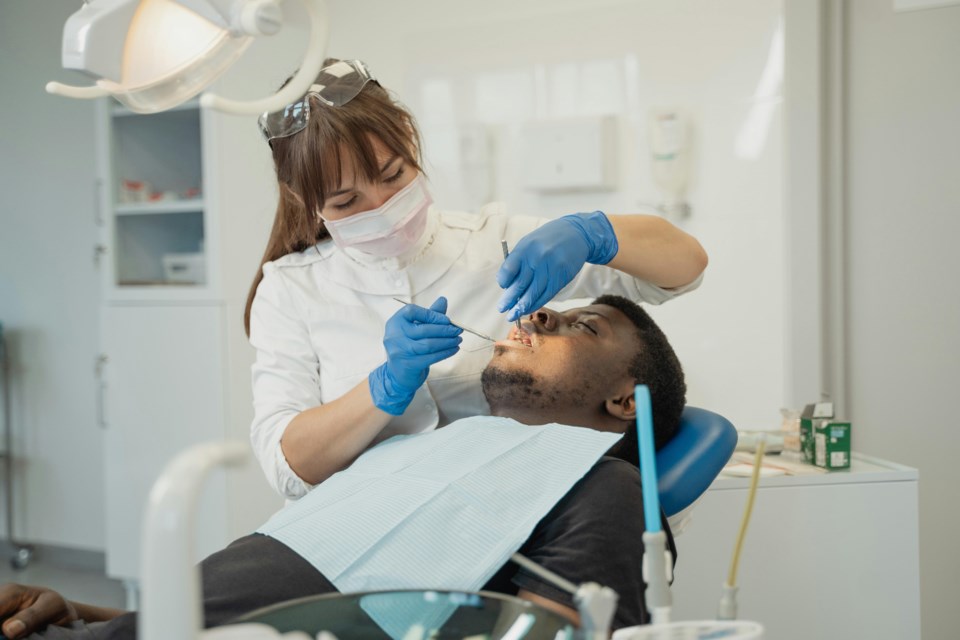April is Oral Cancer Awareness Month, a reminder for the importance of oral cancer screenings and the importance of early detection. Oral cancer encompasses cancers of the mouth, tongue, lips, throat and even the salivary glands. Oral cancer collectively kills nearly one person every hour of every day of the year and close to 50,000 Americans will be diagnosed with oral cancer this year.
Who is at risk for oral cancer?
Some people are at higher risk of developing oral cancers than others. For example, men develop these cancers more often than women. The incidence of oral cancer increases with age; the increase becomes more rapid after age 50, particularly for adults aged 65 years and older. Some behaviors can increase the risk, such as tobacco use and heavy alcohol use (more than four drinks per day). People who do both – drink heavily and use tobacco – significantly increase the risk of developing these cancers.
There are other risks specific to certain types of cancer. Spending a lot of time in the sun increases the risk of developing lip cancer due to ultraviolet radiation. The human papillomavirus (HPV) has also been associated with oropharyngeal cancer. Children as young as preteens can get HPV, but the cancer may not develop until years later, as late as the mid-50s. Because HPV-associated cancers are preventable, the Centers for Disease Control and Prevention recommends that children as young as nine years old get vaccinated against HPV.
What should I be concerned about?
You know your body better than anyone else does. If you notice any of the following signs, talk to your dentist:
- A sore or ulcer on the lips or in the mouth that does not heal.
- Red or white patches in the mouth that don’t go away.
- Pain, tenderness, or numbness on the lips or in the mouth.
- A lump, thickening, or swelling in or around the mouth or throat.
- A rough or crusty or eroded area on the lips.
- Difficulty chewing, swallowing, speaking, or moving the jaw or tongue.
- A change in the way your teeth fit together when you close your mouth or the way your dentures fit.
How is oral cancer diagnosed?
The goal of oral cancer screening is to detect cancer or precancerous lesions that may lead to mouth cancer at an early stage when cancer or precancerous lesions are easiest to remove and more likely to be cured. Oral cancer screening can lead to additional tests such as a biopsy when your dentist or oral and maxillofacial surgeon removes a small amount of the abnormal tissue and sends it to a pathologist who examines it under a microscope to determine if it is cancer.
What are the myths about oral cancer?
Myth #1: I don’t see anything in my mouth, so I don’t have to worry about oral cancer.
Precancerous and cancerous lesions can develop in places that are difficult for people to see during self-examination. Leukoplakia is a white spot and erythroplakia is a red spot; both of which can be precancerous lesions and do not usually cause discomfort. Your dentist will examine your mouth and look in the places that are not readily visible to you.
Myth #2: There’s nothing I can do to protect myself against oral cancer.
Take control of your health. Prevention is the key. Oral cancer screening can help in early detection and saving lives.
How is oral cancer treated?
Oral cancer is easiest to beat if it is treated early and before it spreads to other parts of your body. Treatments include surgery, radiation therapy and medicines. Medicines that help treat mouth cancer include chemotherapy, targeted therapy and immunotherapy. You may have just one type of treatment, or you may undergo a combination of cancer treatments.
Kenneth Fleisher, DDS, FACS, is a clinical professor at NYU College of Dentistry and the Sunset Park Family Health Center at NYU Langone– Dental Medicine.




